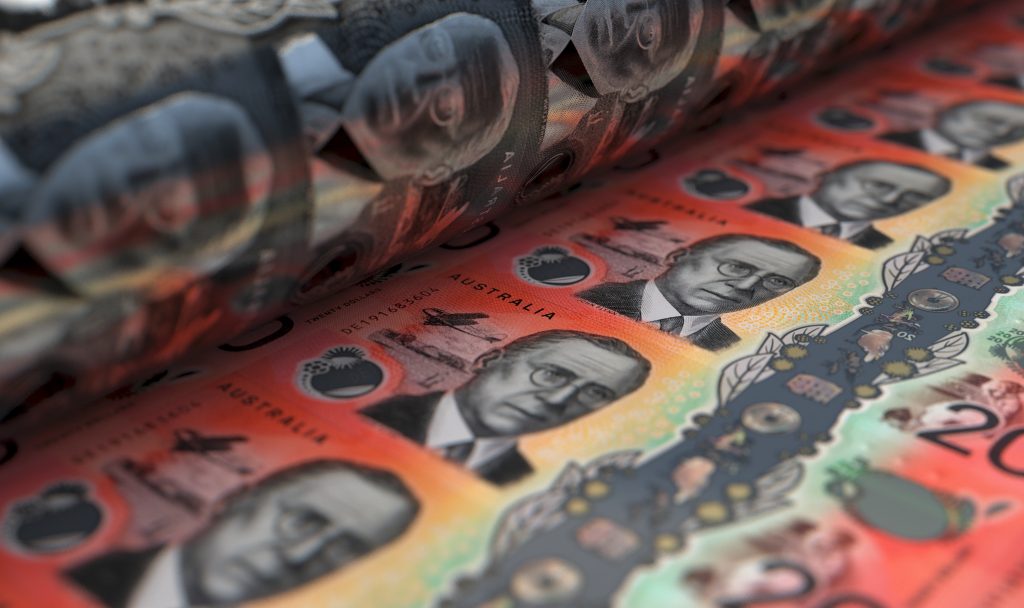Unlock the Treasury door, Modern Monetary Theory has transformed the debate over government spending, writes Dan Murphy.
When Treasurer Dominic Perrottet stole NSW public servants’ pay rises in 2020, he trotted out familiar lines. Government workers must “make sacrifices” for the “greater good”.
Come the budget, while rebooting the economy required stimulus, it was important to maintain “discipline” and engage in “budget repair,” starting with public servants’ pay rises.
These clichés have framed our understanding of public finances for decades. Governments, like households, must live within their means and there is no more important policy goal than a budget surplus.
COVID-19, however, has proved the great disrupter. It is only governments’ spending that can get economies moving post-shutdown, and spend they have. NSW is set to be $104 billion in debt by 2024, yet there is no great panic.
In a year that demanded reflection, economics had its lightbulb moment: If all this debt and deficit can be taken on without the sky falling, maybe the conventional wisdom is built on a myth.
Driving this reappraisal is a set of ideas known as Modern Monetary Theory (MMT). As governments the world over continue to take on record debt they will never be able to repay, we are going to be hearing a lot about MMT, with public servants owning a big stake in how it plays out.
What is MMT?
Under current convention, government can only fund its activities by imposing taxes, or going into deficit, which must be financed by borrowing the difference between revenue and expenditure.
In reality, this “borrowing” involves the Reserve Bank auctioning off Australian government bonds. A select group of merchant banks bid and those willing to accept the lowest interest are successful. These bonds are then resold on international money markets. Australia pays the holders regular interest and the principal on maturity.
Funding government under MMT would be a simple administrative procedure: Treasury sells bonds to our Reserve Bank, which generates, via a keystroke, the required amount of money. This is
transferred back to government coffers to be spent.
The question of whether the government pays off the bond is academic. The Reserve Bank does not need the money to fund future bond purchases. If the government does pay the bond off, it creates a profit for the Reserve Bank, which is returned as a dividend to its owner, the government.
Some MMT models remove the Reserve Bank from this process and have Treasury supply the government with money directly.
In essence, MMT is a simple idea: that currency-issuing governments are never revenue-constrained and do not have to borrow to fund their functions. From this principle flow many possibilities for a better and fairer economy.
Dr Steven Hail, economics lecturer at Adelaide University, is a prominent voice in the emerging MMT movement. When training London bankers in the 1990s he began to sense the classical theories he used didn’t explain how the monetary system actually worked.
Dr Hail parted ways completely with mainstream economics following the failures of the Global Financial Crisis of 2008 and believes MMT is well on its way to replacing the old dogma.
“What we are going through at the moment is the most rapid paradigm shift in economic thinking in the history of the discipline,” he said. “What MMT offers is not a ‘free lunch’. All it says is we have no lack of Australian dollars. There can never be a crisis related to the funding of national debt because the government is a monetary sovereign. That is just a pure fact.”
He advances MMT as the framework for addressing many issues, including inflated state government deficits arising from COVID.
“State government spending in response to the pandemic should be taken on by the currency issuer, the national government,” he said. “They don’t have to worry about credit rating agencies.”
Viewed through an MMT lens, there is no justification for cutting public servants’ pay now, nor will there be in three years’ time for state austerity budgets in order to pay down debt.
JOBS FOR ALL
Maintenance of full employment is actually enshrined as an obligation in our Reserve Bank’s charter although it is many years since Australia experienced it. For MMT advocates this is a result of deliberate policies to maintain a pool of unemployed in order to suppress wages and inflation.
In response, MMT proposes a federal jobs guarantee. Every unemployed person would be offered a useful job in their local area at a socially inclusive minimum wage.
Concerns have been raised that job guarantee roles could supplant work now done at higher wages. Dr Hail acknowledges that unions will have to be alert to this but should focus on the improved bargaining position greater economic security would place all workers in.
The backlash to MMT’s rising popularity is in full swing among those wedded to the status quo. When ABC finance guru Alan Kohler discussed the merits of MMT in June, Liberal MP Tim Wilson took to Twitter, asking if he ran his personal finances by incurring endless debt. “Governments are not households” Kohler fired back and the lazy analogy has not carried the same impact since.
Another swipe goes something like “they can’t just conjure up money, it’s alchemy, preposterous!” This is undermined by the fact all central banks are creating money and buying their government’s bonds to avoid a debt crisis. Australia’s Reserve is doing this right now to the tune of $100 billion. This is tacit endorsement of MMT but is downplayed.
A more substantial critique MMT must grapple with is that it makes high inflation inevitable as more money enters circulation. MMT advocates respond that a “borrowed” dollar is as inflationary as a dollar issued by the Reserve Bank. What matters is whether spending outstrips growth in the productive capacity of the economy.
In Australia, inflation is at historic lows, meaning there is much scope to spend on improved services and address issues such as climate change and homelessness. In the long run however, any MMT regime will need effective inflation monitoring and management mechanisms.
MMT raises many questions. An obvious one, if governments can fund themselves, do we need taxes at all? This theory rests on a coherent body of thought that has already answered this (taxes underpin demand for a nation’s currency) and many others.
The political question raised by MMT is a more fundamental one. What if all the lines we have been fed for years about the need to cut and privatise in order to avoid passing on debt to our children’s children are based on a myth?
In the MMT era it will be increasingly difficult for governments to cry poor.
Dan Murphy is a PhD researcher in education statistics at the University of Melbourne.
MODERN MONETAR THEORY – KEY POINTS
- Countries with their own currency need not borrow to fund budget deficits
- The Federal Government can cover states’ increased expenses due to COVID-19 without worrying about credit ratings
- Full employment is attainable via a jobs
WHO TO FOLLOW
Professor Stephanie Kelton Advisor to Bernie Sanders, author of bestselling The Deficit Myth @ StephanieKelton
Professor Bill Mitchell Australian academic at the University of Newcastle. Blogs daily at bilbo. economicoutlook.net @billy_blog
Warren Mosler Former Wall Street hedge fund manager, one of the first to call out the debt cult @wbmosler
Dr Steven Hail Leading Australian MMT advocate @StevenHailAus
Jengis Osman MMT-savvy union organiser @JengisO

